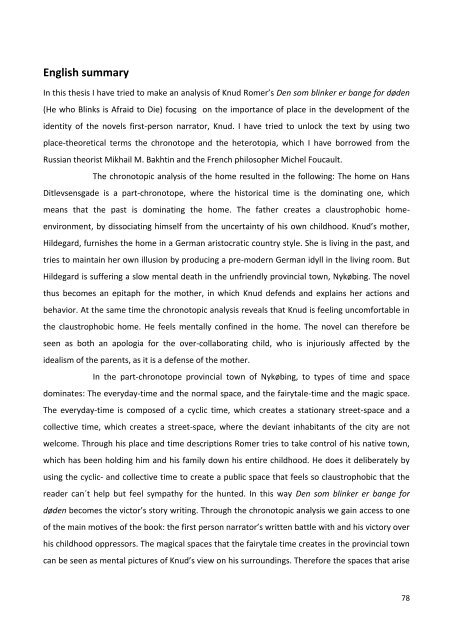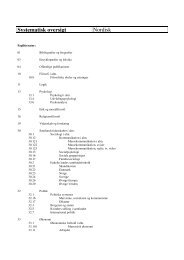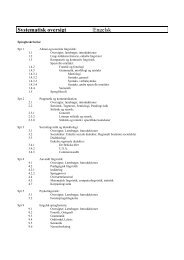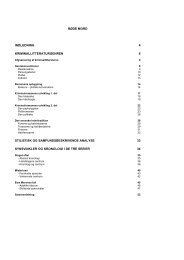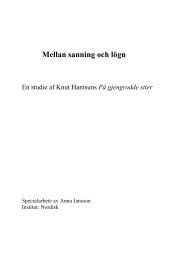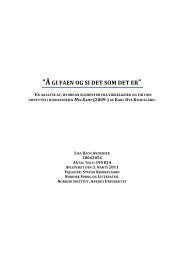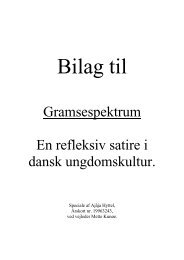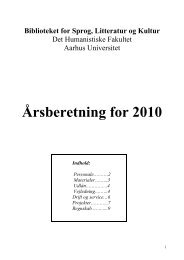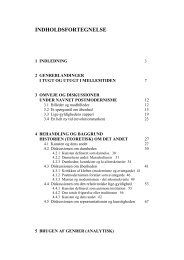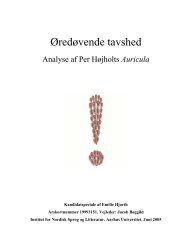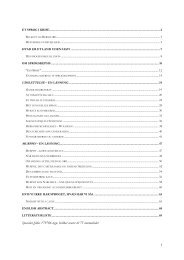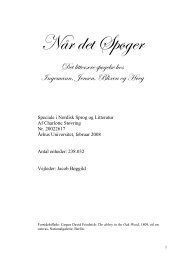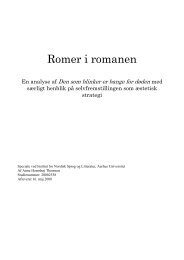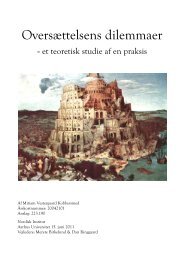Om sted og identitet i Knud Romers - Aarhus Universitet
Om sted og identitet i Knud Romers - Aarhus Universitet
Om sted og identitet i Knud Romers - Aarhus Universitet
Create successful ePaper yourself
Turn your PDF publications into a flip-book with our unique Google optimized e-Paper software.
English summary<br />
In this thesis I have tried to make an analysis of <strong>Knud</strong> Romer’s Den som blinker er bange for døden<br />
(He who Blinks is Afraid to Die) focusing on the importance of place in the development of the<br />
identity of the novels first-person narrator, <strong>Knud</strong>. I have tried to unlock the text by using two<br />
place-theoretical terms the chronotope and the heterotopia, which I have borrowed from the<br />
Russian theorist Mikhail M. Bakhtin and the French philosopher Michel Foucault.<br />
The chronotopic analysis of the home resulted in the following: The home on Hans<br />
Ditlevsensgade is a part-chronotope, where the historical time is the dominating one, which<br />
means that the past is dominating the home. The father creates a claustrophobic home-<br />
environment, by dissociating himself from the uncertainty of his own childhood. <strong>Knud</strong>’s mother,<br />
Hildegard, furnishes the home in a German aristocratic country style. She is living in the past, and<br />
tries to maintain her own illusion by producing a pre-modern German idyll in the living room. But<br />
Hildegard is suffering a slow mental death in the unfriendly provincial town, Nykøbing. The novel<br />
thus becomes an epitaph for the mother, in which <strong>Knud</strong> defends and explains her actions and<br />
behavior. At the same time the chronotopic analysis reveals that <strong>Knud</strong> is feeling uncomfortable in<br />
the claustrophobic home. He feels mentally confined in the home. The novel can therefore be<br />
seen as both an apol<strong>og</strong>ia for the over-collaborating child, who is injuriously affected by the<br />
idealism of the parents, as it is a defense of the mother.<br />
In the part-chronotope provincial town of Nykøbing, to types of time and space<br />
dominates: The everyday-time and the normal space, and the fairytale-time and the magic space.<br />
The everyday-time is composed of a cyclic time, which creates a stationary street-space and a<br />
collective time, which creates a street-space, where the deviant inhabitants of the city are not<br />
welcome. Through his place and time descriptions Romer tries to take control of his native town,<br />
which has been holding him and his family down his entire childhood. He does it deliberately by<br />
using the cyclic- and collective time to create a public space that feels so claustrophobic that the<br />
reader can´t help but feel sympathy for the hunted. In this way Den som blinker er bange for<br />
døden becomes the victor’s story writing. Through the chronotopic analysis we gain access to one<br />
of the main motives of the book: the first person narrator’s written battle with and his victory over<br />
his childhood oppressors. The magical spaces that the fairytale time creates in the provincial town<br />
can be seen as mental pictures of <strong>Knud</strong>’s view on his surroundings. Therefore the spaces that arise<br />
78


